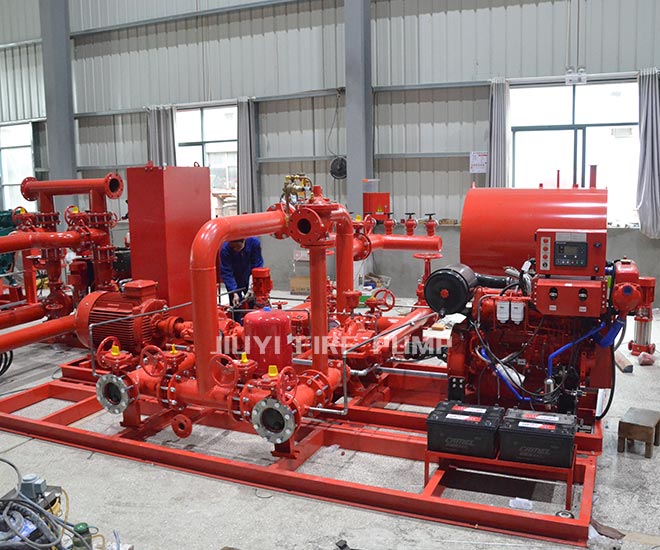
Fire pumps are an essential component of modern fire protection systems, playing a crucial role in ensuring the safety of buildings, occupants, and assets in the event of a fire. These powerful devices are designed to provide a reliable source of water to fire suppression systems, such as sprinklers, fire hose lines, and standpipes, when the primary water supply is insufficient or unavailable. Without a functioning fire pump, many fire suppression systems would be ineffective, compromising building safety.
In this article, we will explore why fire pumps are critical for building safety, highlighting their importance in fire protection systems and the potential risks associated with their failure.
Fire pumps are primarily responsible for delivering the necessary water pressure and flow to fire protection systems when there is inadequate water supply or pressure from municipal systems. Fire sprinkler systems, hose lines, and standpipes rely on a constant and sufficient water supply to control or extinguish fires. In many cases, municipal water systems cannot provide the required pressure or flow, especially in large buildings or high-rise structures.
In high-rise buildings, skyscrapers, and large complexes, fire pumps are indispensable. These buildings present unique challenges in firefighting due to their height, size, and complex layouts. The municipal water supply may not provide adequate pressure to reach the upper floors, and fire department hoses may struggle to supply water to elevated areas. Fire pumps are specifically designed to overcome these challenges:
In some cases, the municipal water supply may be compromised during a fire emergency due to issues such as damaged pipes, low pressure, or loss of power. Fire pumps provide a backup source of water in these situations, ensuring that the fire protection system remains operational even if the main water supply fails.
Fire pumps are not only critical for building safety but also for supporting the efforts of firefighters. Firefighters rely on fire pumps to quickly deploy water to extinguish flames and control the fire’s spread. With the proper pressure and flow, they can more effectively fight fires, especially in large buildings or hazardous environments.
Building safety relies on redundancy in fire protection systems to minimize the risk of failure during an emergency. Fire pumps are designed with built-in redundancies to ensure that if one pump fails, another can take over. Many modern fire protection systems use dual fire pump configurations, where two pumps (primary and backup) are installed to provide continuous operation.
In addition to supporting fire suppression systems, fire pumps are often connected to other life safety systems within the building. These can include emergency sprinkler systems, standpipe systems, and fire hydrant systems, all of which rely on a consistent and reliable water supply to operate effectively during a fire.
Fire pumps are critical for the overall safety of buildings, especially large or high-rise structures. They ensure that fire suppression systems receive the necessary water pressure and flow to operate effectively during a fire emergency. By guaranteeing adequate water supply even when municipal water sources fail or are insufficient, fire pumps save lives, protect property, and support the efforts of firefighters.
Building safety is only as strong as its fire protection systems, and fire pumps are one of the most important components of that system. Regular maintenance, testing, and compliance with industry standards, such as NFPA 20, help ensure that fire pumps remain in peak condition and ready to function at a moment’s notice.
If you're looking to enhance the fire safety of your building, investing in a high-quality fire pump system that meets all regulatory standards is a crucial step. At Jiuyi Fire Technology, we offer reliable, NFPA-compliant fire pumps designed to protect your property and ensure the safety of your occupants in any emergency.